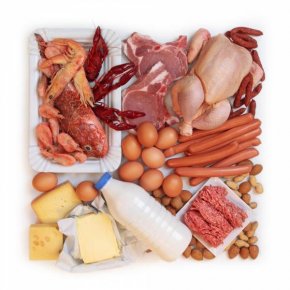
 The High-Octane Diet
The High-Octane Diet
The modern diet of quick and easy foods containing high-levels of unsafe and cancerous toxins puts the entire bodily system into an “emergency mode.” In this mode, the body thrives (but only briefly) off of too many white carbs and fake sugars, putting the body into a scary tailspin as it uses emergency pathways or “high octane” fuel. This is a health-diminishing way of living that creates a symptom-fixing society living on prescription drugs and medications. It is extremely important to our health and our lives in general to move the modern diet away from the life-threatening and unstable emergency blood-sugar pathway (high octane) to a stable
The Two Energy Pathways
The body gets energy in two basic ways (also known as energy pathways). By understanding even just a few basic guidelines to designing a meal plan that can enhance and use both pathways appropriately, you can take your nutrition to a whole new level and in the process, gain more insight into the physiology of your body. The ultimate goal of meal design and preparation is to get the greatest benefits out of the foods we eat, in order to live longer, better our health as a whole, and to prevent disease. In supplying these two pathways with what they need at the appropriate times, we perform better and live healthier lives in general.
Ketosis Versus Blood-Sugar Pathways
I have discussed a bit about the dangers of living in emergency mode on the unstable blood-sugar pathway. This is greatly enhanced by unhealthy foods and lack of meal planning in today’s stressed society. Discussion of this dangerous source of fuel could be an entire series in itself. For now, let’s focus on how to convert our energy source from dangerous to one that is safe and efficient.
We must fuel up on foods that keep the body in fat-burning (fat-metabolizing) mode. The fat-metabolizing pathway is the steady and longer-lasting form of energy the body uses to perform normal day-to-day activities. Therefore, meal planning allows you to formulate a plan and to set out meals ahead of time that act as beneficial fuel throughout the day - versus fake junk food that sparks blood-sugars into overdrive. While this overdrive reaction to stress factors is necessary for survival at certain times, it is not meant to be the primary source.
How do we shift our bodies to fat-burning? Intelligent meal planning.
Meal Planning Eating to Promote Fat-Burning
1. Plan Your Meals Ahead of Time. Meal preparation allows you to pick all the necessary sources of foods that you will need and have them available. This reassures the body (especially when eating meals on a routine schedule each day) that it will have the safe fuels it needs, thereby preventing it from turning to blood-sugar for fuel. And, without having to think too much during the day about food (having meals with you), you know you aren’t short of anything your body needs, whether that is maintaining a healthy fat content or protein and carbohydrate ratio. You have already planned that out.
 2. Eat Every 2-3 Hours. Eating every 2-3 hours increases metabolism (fat-burning) by feeding muscle and starving fat and gives the body the assurance that it will not starve. When the body thinks it might starve, it stores fat just in case that next meal never comes. (When starting out, it is helpful to set a timer for meal-time reminders so that you don’t skip a meal). Pack enough meals for the day.
2. Eat Every 2-3 Hours. Eating every 2-3 hours increases metabolism (fat-burning) by feeding muscle and starving fat and gives the body the assurance that it will not starve. When the body thinks it might starve, it stores fat just in case that next meal never comes. (When starting out, it is helpful to set a timer for meal-time reminders so that you don’t skip a meal). Pack enough meals for the day.
3. Drink Water. The body can use up to 4oz at a time so sipping on water throughout the day is better than pounding down your water all at once. Try to use only BPA-free bottles and/or glass containers to eliminate toxins in plastics. The body loses water continuously when we sweat and by excretion and respiration so we must replace the moisture lost. Most people need about 2 liters per day between meals, but 4-5 liters per day may be necessary with strenuous activity, sunny, or hot conditions. If your diet consists of 85% or more of raw foods the need for between-meal water is reduced.
4. Eliminate Fluoride. This is especially important to avoid in toothpaste and in various water sources. Installing water filters in not only the shower but on all other water fixtures is very helpful. Fluoride blocks the body’s use of the very important mineral iodine, which can eliminate insulin resistance syndrome (eliminating excess insulin production) and blocks the internal production of excess estrogen. In short, eliminating fluoride helps eliminate (by estrogen and iodine factors) the storing of excess body fat and decreases unhealthy cravings.
5. Avoid Soy. Avoid soy, flax, canola, corn, hydrogenated or partially-hydrogenated or “vegetable” oils like the plague. Our modern lives are unfortunately highly contaminated with estrogen-mimicking substances such as soy, flax, pesticides, petroleum, and plastics fumes and residues. These factors, coupled with hours of sitting at desks and computers, little exercise, and high starch diets, all promote inflammation and excess body-fat.
6. Stay away from Sugar. This means fructose, agave, and starches such as root vegetables, legumes, and grains. These sugars spike blood-sugar and the emergency pathway we are trying to avoid. I am a proponent of the natural and safe sweetener Stevia, which is actually blood-sugar balancing and therefore beneficial.
7. Eat Protein First. Always eat protein first and with every meal. Consume more protein than carbohydrates but always a balance of carb, fat, fiber, and protein at each meal. Consume protein within 30 minutes after exercising.
8. Reduce Meal Sizes. Eventually, when meal planning we want to aim for 40-50% smaller portions (unless you already eat small meals). By eating frequently (every 2-3 hours) this will help with the cravings that this form of “starvation” promotes and we will be less hungry anyway. Just make sure you maintain the protein/carb/fat/fiber balance no matter how small the meal might be.
9. Eat Raw Foods. I encourage people to eat about 85% of their food raw. This is the fastest way to get the most nutrients out of the foods we eat. When foods are processed or heated, they lose most of their nutritional value. Getting the most from each meal means less need for the body to seek out other quick-digesting fuel sources like those found in blood-sugar diets/pathways. Consuming raw is like immediate nutrition and the body is more readily satisfied.
10. Eat Fat and Avoid Low-Fat. Consume good (healthy) fats such as coconut oil, avocado, olive oil with each meal. Healthy fats not only allow for the absorption of important vitamins, but monounsaturated fats (such as almonds) help reduce abdominal fat. Combining fats and carbs in your meal plans keep your blood sugar levels stable and thus help eliminate hunger-inducing spikes and dips.
11. Be Consistent.The more consistent with your diet and meal times you are, the better your hormones function and these control the majority of all bodily functions. Routine with diet is key to stabilizing the body and keeping it on the right pathway.
Recommended Animal Proteins:
Meat such as game, beef, chicken (grass-fed, organic when possible), fish (mercury-free, wild-caught/not farmed preferred), goat cheese, eggs (free-range, organic when possible)
INTERESTING VIDEO












